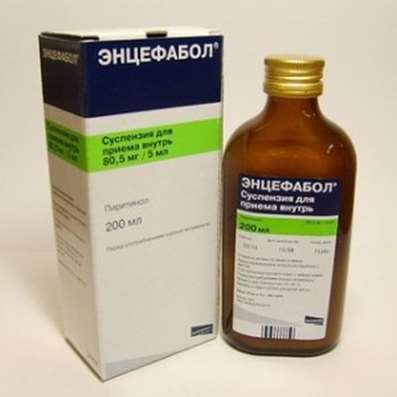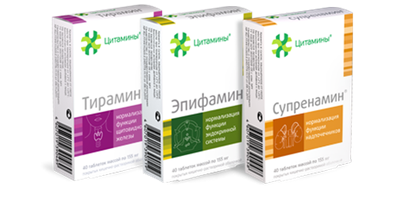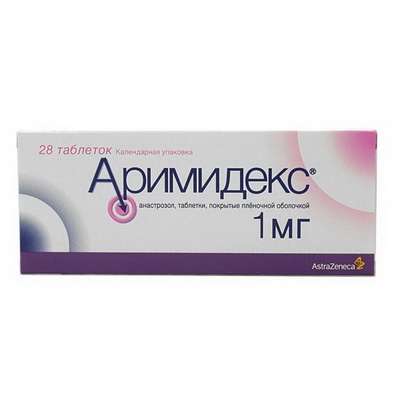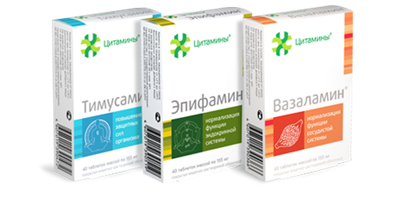Instruction for use: Alental
I want this, give me price
Active substance Aceclofenac
ATX Code M01AB16 Aceclofenac
Pharmacological group
Non-steroidal anti-inflammatory drug (NSAID) [NSAIDs - Acetic acid derivatives and related compounds]
Nosological classification (ICD-10)
K08.8.0 * Painful toothache
Dentinal pain, Dentinal pains, Pain pulpitis, Anesthesia in dentistry, Pain syndromes in dental practice, Pain after removal of tartar, Pain when extracting a tooth, Toothache, Pain after dental interventions
M06.9 Other specified rheumatoid arthritis
Rheumatoid arthritis,Pain syndrome in rheumatic diseases, Pain in rheumatoid arthritis, Inflammation in rheumatoid arthritis, Degenerative forms of rheumatoid arthritis, Children's rheumatoid arthritis, Exacerbation of rheumatoid arthritis, Acute articular rheumatism, Rheumatic arthritis, Rheumatic polyarthritis, Rheumatoid arthritis, Rheumatic polyarthritis, Rheumatoid arthritis, Rheumatoid arthritis of active course, Rheumatoid arthritis, Rheumatoid polyarthritis, Acute rheumatoid arthritis, Acute rheumatism
M19.9 Arthrosis, unspecified
Change in brush with osteoarthritis, Osteoarthritis, Osteoarthrosis, Arthrosis of large joints, Pain syndrome in osteoarthritis, Pain syndrome in acute inflammatory diseases of the musculoskeletal system, Pain syndrome in chronic inflammatory diseases of the musculoskeletal system, Deforming arthrosis, Deforming osteoarthritis, Deforming osteoarthritis of joints, Osteoarthritis in the acute stage, Osteoarthritis of large joints, Acute pain syndrome with osteoarthritis, Post-traumatic osteoarthritis, Rheumatic osteoarthritis, Spondylarthrosis, Chronic osteoarthritis
M35.3 Rheumatic polymyalgia
Pseudoarthritis rhizomelic, Rheumatic polymyalgia, Pain syndrome in rheumatic diseases, Muscle pain with rheumatism, Extra-articular rheumatism, Extra-articular rheumatic syndrome, Extra-articular rheumatic diseases, Extra-articular rheumatic soft tissue injury, Extra-articular forms of rheumatism, Rheumatic soft tissue damage, Rheumatism of soft tissues, Rheumatic diseases of soft tissues, Rheumatic diseases of the periarticular soft tissues, Rheumatic affections of soft tissues, Rheumatic collagen diseases
M45 Ankylosing spondylitis
Ankylosing spondylarthrosis, Marie-Strumpel disease, Ankylosing spondylitis, Pain syndrome in acute inflammatory diseases of the musculoskeletal system, Pain syndrome in chronic inflammatory diseases of the musculoskeletal system, Bechterew's disease, Ankylosing spondylitis, Diseases of the spinal column, Rheumatic spondylitis, Bechterew-Marie-Strumpel disease
M53.1 neck and shoulder syndrome
Acute shoulder-scapular periarthritis, Shoulder periarthritis, Of shoulder periarthritis, Shoulder periarthritis,frozen shoulder, Periarthritis in humeroscapular area, shoulder hand syndrome
M54.4 Lumbago with sciatica
Pain in the lumbosacral spine, Lumbago, Sciatica, Lumbar syndrome
M75.0 Adhesive shoulder capsulitis
Acute shoulder-scapular periarthritis, Duplay's disease, Duplay Syndrome, Frozen shoulder, Shoulder-shoulder periarthritis, Periarteritis humeroscapular, Shoulder periarthritis, Pleiraptocular periarthritis, Capsule, Frozen shoulder
R52.9 Unspecified Pain
Pain after cholecystectomy, Pain shooting, Non-malignant pain, Obstetric and gynecological pain, Pain syndrome, Pain in the postoperative period, Pain in the postoperative period after orthopedic surgery, Pain of inflammatory genesis, Pain than cancer genesis, Pain syndrome after diagnostic procedures, Pain after surgery Diagnostic, Pain after surgery, Pain after orthopedic surgery, Pain after injuries, Pain after the removal of hemorrhoids, Pain at the non-rheumatic inflammation of nature, Pain in inflammatory lesions of the peripheral nervous system, Pain in diabetic neuropathy, Pain in acute inflammatory diseases of the musculoskeletal system, Pain when the tendon pathology, Pain smooth muscle spasm, Pain spasm of smooth muscles (renal and biliary colic, intestinal spasms, dysmenorrhea), Pain spasm of smooth muscles of internal organs, Pain spasm of smooth muscles of internal organs (kidney and biliary colic, intestinal spasms, dysmenorrhea), Pain in trauma syndrome, Pain with injuries and after surgical interventions, Pain in chronic inflammatory diseases of the musculoskeletal system, Pain with duodenal ulcer, Pain syndrome in gastric ulcer, Pain syndrome in gastric ulcer and duodenal ulcer, pain, Pain during menstruation, pain syndromes, painful condition, Painful foot fatigue, Sore gums when wearing dentures, Soreness of the cranial nerves exit points, Painful menstrual irregularities, Painful dressings, Painful muscle spasm, Painful teeth growth, Melosalgia, Pain in the area of the surgical wound, Pain in the postoperative period, Pain in the body, Pain after diagnostic procedures, Pain after orthopedic surgery, Pain after surgery, The pains of the flu, Pain in diabetic polyneuropathy, Pain for burns, Pain during sexual intercourse, Pain during diagnostic procedures, Pain during therapeutic procedures, for colds Pain, Pain in sinusitis, Pain in trauma, Pain traumatic, The pain in the postoperative period, Pain after diagnostic procedures, The pain after sclerotherapy, Pain after surgery, postoperative Pain, Pain postoperative and posttraumatic, posttraumatic pain, Pain when swallowing, Pain in infectious and inflammatory diseases of the upper respiratory tract, The pain of burns, The pain in traumatic muscle injury, Pain in trauma, The pain of tooth extraction, The pain of traumatic origin, Pain caused by spasm of smooth muscles, Expressed pain syndrome, Expressed pain syndrome, traumatic origin, Postoperative pain, Post-traumatic pain, Post-traumatic pain syndrome, Torpid pain, Traumatic pain, Traumatic pain, Mild pain, Moderately severe pain, Moderate pain, Polyarthralgia with polymyositis
R68.8.0 * Inflammatory syndrome
Painful syndrome of inflammatory genesis, Pain syndrome with inflammation of non-rheumatic nature, Pain syndrome with inflammatory lesions of the peripheral nervous system, Painful inflammation of the shoulder joint, Painful inflammation after trauma or surgery, Painful inflammation after surgery, Painful hemorrhoids, Inflammation of the tympanic membrane, Inflammation of the larynx, Inflammation of the gums, Inflammation of cellulose, Inflammation of lymph nodes, Tonsillitis, Inflammation of muscles, Inflammation of soft tissues, Inflammation of the mouth, Inflammation after surgery and trauma, Inflammation after orthopedic surgery, Inflammation after trauma, Inflammation in rheumatoid arthritis, Inflammation of the middle ear, Inflammatory gum disease, Inflammatory diseases of the eyelids, Inflammatory eye diseases, Inflammatory swelling of soft tissues, Inflammatory processes, Inflammatory processes after surgical interventions, Inflammatory process, Inflammatory Syndrome, Inflammatory syndrome of non-rheumatic origin, Inflammatory syndrome after surgery, Purulent infections, Infringements of function of a liver of an inflammatory etiology, Acute inflammation of the musculoskeletal tissue, Pre-inflammatory soft tissue inflammation
Composition
Tablets covered with a film membrane 1 tab.
active substance:
aceclofenac 100 mg
auxiliary substances: MCC - 82.6 mg; croscarmellose sodium - 8 mg; povidone K30 - 6.4 mg; sodium stearyl fumarate - 3 mg
membrane film: hypromellose - 3.6 mg; talc - 1.2 mg; titanium dioxide - 0.66 mg; Macrogol 4000 (polyethylene glycol 4000) - 0.54 mg
or dry film-coating mixture (hypromellose - 60%, talc - 20%, titanium dioxide - 11%, macrogol 4000 (polyethylene glycol 4000) - 9%) - 6 mg
Description of dosage form
Tablets: round biconvex, covered with a film coat of white or almost white color. On the cross-section - the core is white or almost white.
pharmachologic effect
Pharmacological action - anti-inflammatory, antipyretic, analgesic.
Pharmacodynamics
Aceclofenac has an anti-inflammatory, analgesic and antipyretic effect. Oppresses the synthesis of PG and so on. affects the pathogenesis of inflammation, the occurrence of pain and fever. In rheumatic diseases, the anti-inflammatory and analgesic effect of aceclofenac contributes to a significant reduction in the severity of pain, morning stiffness, swelling of the joints, which improves the functional state of the patient.
Pharmacokinetics
Suction. After ingestion, aceclofenac is rapidly absorbed, its bioavailability is close to 100%. Tmax in the blood plasma - 1,25-3 h after ingestion. Eating slows down absorption, but does not affect its extent.
Distribution. Aceclofenac binds to a high degree with blood plasma proteins (> 99.7%). Aceclofenac penetrates into the synovial fluid, where its concentration reaches 60% of its concentration in the blood plasma. Vd is 30 liters.
Metabolism. It is believed that aceclofenac is metabolized by the CYP2C9 isoenzyme to form a metabolite of 4-OH-aceclofenac, whose contribution to the clinical effect of the drug is likely to be minimal. Diclofenac and 4-OH-aceclofenac are among the numerous metabolites of aceclofenac.
Excretion. The average T1 / 2 is 4-4.3 hours. The ground clearance is 5 l / h. Approximately 2/3 of the dose taken is excreted by the kidneys, mainly in the form of conjugated hydroxymetabolites. Only 1% of the dose after ingestion is excreted unchanged.
Indications
relief of inflammation and pain syndrome with lumbago, toothache, humeroscapular periarthritis, rheumatic soft tissue damage;
symptomatic treatment of rheumatoid arthritis, osteoarthritis, ankylosing spondylitis.
The drug is intended for symptomatic therapy, reducing pain and inflammation at the time of use, the progression of the disease is not affected.
Contraindications
hypersensitivity to aceclofenac or drug components;
erosive and ulcerative lesions of the gastrointestinal tract in the phase of exacerbation (including ulcerative colitis, Crohn's disease);
gastrointestinal bleeding or suspicion of it;
complete or incomplete combination of bronchial asthma, recurrent nasal polyposis and paranasal sinuses and intolerance to acetylsalicylic acid or other NSAIDs (including in anamnesis);
severe hepatic impairment or active liver disease;
disorders of hematopoiesis and coagulation;
severe renal failure (Cl creatinine <30 ml / min), progressive kidney disease, confirmed hyperkalemia;
severe heart failure;
period after aortocoronary shunting;
pregnancy;
the period of breastfeeding;
age to 18 years.
With caution: liver, kidney and gastrointestinal disease in history; presence of Helicobacter pylori infection; bronchial asthma; arterial hypertension; decrease in BCC (including immediately after extensive surgical interventions); cardiac ischemia; chronic renal, hepatic and cardiac failure; Cl creatinine <60 ml / min; ulcerative lesions of the gastrointestinal tract in anamnesis; cerebrovascular diseases; dyslipidemia / hyperlipidemia; diabetes; diseases of peripheral arteries; smoking; elderly age; long-term use of NSAIDs; alcoholism; severe physical illness; hemostasis defects; risk of developing cardiovascular thrombosis (myocardial infarction, acute disorders of cerebral circulation - ischemic, hemorrhagic stroke); systemic lupus erythematosus; long-term use of NSAIDs; reception of GCS, anticoagulants, antiaggregants, serotonin reuptake inhibitors.
pregnancy and lactation
The drug Alental® is contraindicated in pregnancy. Information on the use of aceclofenac in pregnancy is absent. The inhibition of GH synthesis may adversely affect the course of pregnancy and / or the development of the embryo / fetus. During the III trimester of pregnancy, all inhibitors of PG synthesis, having cardiopulmonary toxicity, can cause premature closure of Botall's duct with the development of pulmonary hypertension, impaired fetal kidney function, which can progress to kidney failure in combination with polyhydramnios.
Mothers in late pregnancy and newborns: the drug can affect the duration of bleeding due to the antiaggregant effect, which can develop even after the application of very low doses; the drug can inhibit uterine contractions, resulting in delayed delivery or prolonged labor.
The drug Alenthal® should not be taken while breastfeeding. Data on the isolation of aceclofenac with human milk are not available; when administering radioactive 14C-aceclofenac to lactating rats, no appreciable transfer of radioactivity into milk was observed.
NSAIDs can affect fertility and are not recommended for use by women planning a pregnancy.
Side effects
Classification of the incidence of adverse events (WHO): very often -> 1/10; often from> 1/100 to <1/10; infrequently - from> 1/1000 to <1/100; rarely - from> 1/10000 to <1/1000; very rarely - <1/10000, including individual messages.
On the part of the blood and lymphatic system: rarely - anemia; very rarely - oppression of bone marrow, granulocytopenia, thrombocytopenia, neutropenia, hemolytic anemia.
From the immune system: rarely - anaphylactic reactions, including shock, hypersensitivity.
From the side of the psyche: very rarely - depression, unusual (atypical) dreams, insomnia.
From the nervous system: often - dizziness; very rarely - paresthesia, tremor, drowsiness, headache, dysgeusia (perversion of taste).
From the side of the organ of vision: rarely - visual impairment.
From the side of the organ of hearing and the labyrinth: very rarely - vertigo, noise in the ears.
From the CCC: rarely - heart failure, increased blood pressure; very rarely - tachycardia, skin hyperemia, hot flashes (short-term fever, accompanied by increased sweating), vasculitis.
From the respiratory system, chest and mediastinum: rarely - shortness of breath; very rarely - bronchospasm.
From the digestive tract: often - dyspepsia, abdominal pain, nausea, diarrhea; infrequently - flatulence, gastritis, constipation, vomiting, ulceration of the oral mucosa; rarely - melena, ulceration of the mucous membrane of the gastrointestinal tract, hemorrhagic diarrhea, hemorrhage of the gastrointestinal mucosa; very rarely - stomatitis, vomiting of blood, perforation of the intestine, worsening of Crohn's disease and ulcerative colitis, pancreatitis.
From the liver and biliary tract: often - increased activity of liver enzymes; very rarely - damage to the liver (including hepatitis), increased activity of AP.
From the skin and subcutaneous tissue: infrequently - itching, rash, dermatitis, urticaria; rarely - angioedema; very rarely - purpura, eczema, severe reactions from the skin and mucous membranes (including Stevens-Johnson syndrome and toxic epidermal necrolysis). In some cases, serious skin infections and soft tissue infections have been observed with the administration of NSAIDs during the disease with chicken pox.
From the side of the kidneys and urinary tract: infrequently - increased concentrations of urea and creatinine in the blood plasma; very rarely - nephrotic syndrome, renal failure, interstitial nephritis.
Systemic disturbances: very rarely - increased fatigue, spasms of the muscles of the lower extremities.
From the side of metabolism: very rarely - hyperkalemia, weight gain.
Interaction
With the exception of warfarin, studies of drug interactions have not been conducted. Aceclofenac is metabolized by the CYP2C9 isoenzyme; In vitro data show that aceclofenac may be an inhibitor of this enzyme. Thus, the risk of PCV is possible with simultaneous administration with phenytoin, cimetidine, tolbutamide, phenylbutazone, amiodarone, miconazole and sulfafenazole. As with other NSAIDs, the risk of PCV with other drugs that are excreted through active renal secretion, such as methotrexate and lithium preparations, increases. Aceclofenac almost completely binds to albumin of blood plasma and, consequently, there is the possibility of interaction by the type of displacement with other drugs that bind to proteins.
Below is the class-specific information for NSAIDs.
Methotrexate: NSAIDs inhibit the tubular secretion of methotrexate; moreover, a small metabolic interaction can occur, which leads to a decrease in the clearance of methotrexate. Therefore, when high doses of methotrexate are used, NSAIDs should be avoided.
Lithium and digoxin: some NSAIDs inhibit the renal clearance of lithium and digoxin, which leads to an increase in the plasma concentration of both substances. Joint use should be avoided if frequent monitoring of lithium and digoxin concentrations is not carried out.
Anticoagulants: NSAIDs inhibit platelet aggregation and damage the gastrointestinal mucosa, which can lead to increased anticoagulant action and increase the risk of gastrointestinal bleeding while taking anticoagulants. Avoid the combined use of aceclofenac and oral anticoagulants coumarin group, ticlopidine and thrombolytics, unless careful monitoring of the patient's condition is performed.
Antiplatelet agents and SSRIs: when combined with NSAIDs may increase the risk of gastrointestinal bleeding.
Cyclosporin, tacrolimus: while taking NSAIDs with cyclosporine or tacrolimus, the risk of increased nephrotoxicity due to decreased renal prostacyclin formation should be considered. Therefore, with simultaneous admission, you should carefully monitor the indicators of kidney function.
Other NSAIDs: with the simultaneous intake of acetylsalicylic acid or other NSAIDs, the incidence of side effects may increase, so caution should be exercised.
SCS: the risk of ulceration or gastrointestinal bleeding increases.
Diuretics: aceclofenac, like other NSAIDs, can inhibit the activity of diuretics, reduce the diuretic effect of furosemide and bumetanide, and the antihypertensive effect of thiazides. Joint reception with potassium-sparing diuretics can lead to an increase in the potassium content in the blood plasma. Aceclofenac did not affect the control of BP when combined with bendroflaizide, although interaction with other diuretics can not be ruled out.
Hypotensive drugs: NSAIDs can also reduce the effect of antihypertensive drugs. Joint administration of ACE inhibitors or ARA II and NSAIDs can lead to impaired renal function. The risk of acute renal failure, which is usually reversible, may increase in some patients with impaired renal function, for example, in elderly patients or in dehydration. Therefore, when combined with NSAIDs, care should be taken. Patients should consume the necessary amount of fluid and be under appropriate supervision (monitoring kidney function at the beginning of the joint application and periodically during treatment).
Hypoglycemic agents: Clinical studies show that diclofenac can be used in conjunction with oral hypoglycemic agents without affecting their clinical effect. However, there are some reports of hypoglycemic and hyperglycemic effects of the drug. Thus, when taking aceclofenac, you should correct the dosage of drugs that can cause hypoglycemia.
Zidovudine: with simultaneous intake of NSAIDs and zidovudine, the risk of hematological toxicity increases. There is evidence of an increased risk of hemarthrosis and hematomas in HIV-positive patients with hemophilia receiving zidovudine and ibuprofen.
Mifepristone: aceclofenac can be used 8-12 days after taking mifepristone, because NSAIDs reduce the effect of drugs in this group.
Kolestyramin: other drugs, incl. and NSAIDs should be used, at least 1 hour before or 4-6 hours after the administration of colestyramine, to reduce its effect on drug absorption.
Dosing and Administration
Inside. The tablet should be swallowed whole, with enough water.
The drug should be taken for as short a period of time as possible. The course of treatment is prescribed by a doctor individually.
Usually adults are assigned to 1 table. 100 mg 2 times a day (morning and evening).
Overdose
There is no evidence of an overdose of aceclofenac in humans.
Symptoms: nausea, vomiting, pain in the stomach, dizziness, headache, hyperventilation with increased convulsive readiness are possible.
Treatment: gastric lavage, the appointment of activated charcoal, symptomatic therapy. Forced diuresis, hemodialysis are not effective enough.
special instructions
It should avoid simultaneous administration of the drug Alental® and other NSAIDs, including selective inhibitors of COX-2.
Undesirable effects can be minimized by applying the minimum effective dose and reducing the duration of treatment needed to control symptoms.
Effect on the digestive tract
Bleeding, ulcer or perforation of the gastrointestinal tract with a lethal outcome were observed with the administration of any NSAIDs at any period of treatment, as if there were corresponding symptoms and serious gastrointestinal diseases in the anamnesis (including peptic ulcer and duodenal ulcer, Crohn's disease, ulcerative colitis) and without them.
The risk of bleeding, ulcer and perforation of the digestive tract (gastrointestinal tract) increases with an increase in the dose of NSAIDs (nonsteroidal anti-inflammatory drugs) in patients with a history of peptic ulcer, especially if it was accompanied by bleeding or perforation, as well as in elderly patients. These patients should take the minimum effective dose of the drug. They need combination therapy with the use of protective agents (including misoprostol or proton pump inhibitors). Such treatment is necessary for patients who take small doses of acetylsalicylic acid or other drugs that adversely affect the condition of the digestive tract.
Patients with gastrointestinal diseases, incl. elderly, should report any unusual symptoms associated with the gastrointestinal tract (especially bleeding), incl. when the drug is taken first. Particular care should be taken in patients who are taking drugs at the same time, which may increase the risk of bleeding or ulcers, such as systemic SCS, anticoagulants (such as warfarin), SSRIs, or antiaggregants (such as acetylsalicylic acid). If there is gastrointestinal bleeding or ulcers, treatment with Alenthal® should be discontinued.
Influence on CAS (cardiovascular system) and CNS (central nervous system)
Patients with arterial hypertension and / or congestive heart failure of mild or moderate degree need appropriate monitoring, because NSAID administration (in particular in high doses for prolonged use) may not significantly increase the risk of arterial thrombosis (eg, myocardial infarction or stroke). There is no reliable data on the absence of this risk when taking aceclofenac.
Patients with uncontrolled arterial hypertension, CHF, established CHD, atherosclerosis of peripheral arteries and / or cerebral circulation disorders should be careful when taking Alental®. Also, before the first dose, care should be taken for patients with risk factors for CAS (eg, hypertension, hyperlipidemia, diabetes, smoking).
Effects on the liver and kidneys
Admission of NSAIDs can cause a dose-related reduction in GHG production and acute renal failure. The importance of PG to ensure renal blood flow should be considered when using the drug in patients with impaired heart, kidney or liver, receiving diuretics, or after surgery, as well as in elderly patients.
Caution should be exercised when administering the drug to patients with impaired hepatic and renal function of mild or moderate degree, as well as to patients with other conditions predisposing to fluid retention in the body. In these patients, NSAIDs can lead to impaired renal function and fluid retention. Patients taking diuretics, people with an increased risk of hypovolemia should also be careful when taking Alental®. It is necessary to appoint a minimum effective dose and regular medical monitoring of kidney function. Undesirable effects from the kidneys are usually resolved after discontinuation of aceclofenac.
Admission of aceclofenac should be discontinued if changes in liver function indicators persist or worsen, clinical signs or symptoms of liver disease develop or other manifestations (eosinophilia, rash) occur. Hepatitis can develop without prodromal symptoms.
The use of NSAIDs in patients with hepatic porphyria can provoke an attack.
Hypersensitivity and skin reactions
Like other NSAIDs, the drug can cause allergic reactions, including anaphylactic / anaphylactoid reactions, even if the drug is taken for the first time. Severe skin reactions (some of which can lead to death), including exfoliative dermatitis, Stevens-Johnson syndrome and toxic epidermal necrolysis, were very rare after NSAID administration.
The highest risk of occurrence of these reactions is observed during the first month of taking the drug. In case of skin rash, damage to the oral mucosa or other signs of hypersensitivity, stop taking Alental®.
In some cases, with chickenpox, skin and soft tissue infections may occur. At present, it is impossible to exclude the role of NSAIDs in worsening of the course of these infections. Therefore, you should avoid taking Alental® with chicken pox.
Hematologic disorders
Aceclofenac can cause reversible inhibition of platelet aggregation.
Disturbances from the respiratory system
Care should be taken when medication is prescribed in patients with bronchial asthma in an anamnesis or with a current bronchial asthma, t. the administration of NSAIDs may provoke the development of sudden bronchospasm in such patients.
Elderly patients
Caution should be exercised when using the drug in elderly patients. they are more likely to experience side effects (especially bleeding and perforation of the digestive tract) when taking NSAIDs. Complications can lead to death. Also, elderly patients are more likely to suffer from kidney, liver or SSS diseases.
Long-term use
All patients receiving long-term treatment with NSAIDs should be closely monitored (for example, a general blood test, functional hepatic and renal tests).
Influence on the ability to drive vehicles and work with machinery. It is necessary to refrain from driving vehicles and practicing other potentially dangerous activities that require an increased concentration of attention and speed of psychomotor reactions, tk. the drug may cause dizziness and other side effects that may affect these abilities.
Form of issue
Tablets, film-coated, 100 mg. In the outline of the cell packaging of PVC or PVC / PVDC film and aluminum foil, 10, 15 or 20 pieces. In a bank of HDPE, 20, 30 or 60 pcs. 2, 3 or 6 contour cell packs of 10 tablets, 2 or 4 contour cell packs of 15 tables, 1 or 3 contourcell packs of 20 tablets. or 1 bank in a pack of cardboard.
Conditions of leave from pharmacies
On prescription.
Storage conditions
In the dark place at a temperature of no higher than 25 ° C.
Keep out of the reach of children.
Shelf life
3 years.
Do not use after the expiry date printed on the package.

 Cart
Cart





